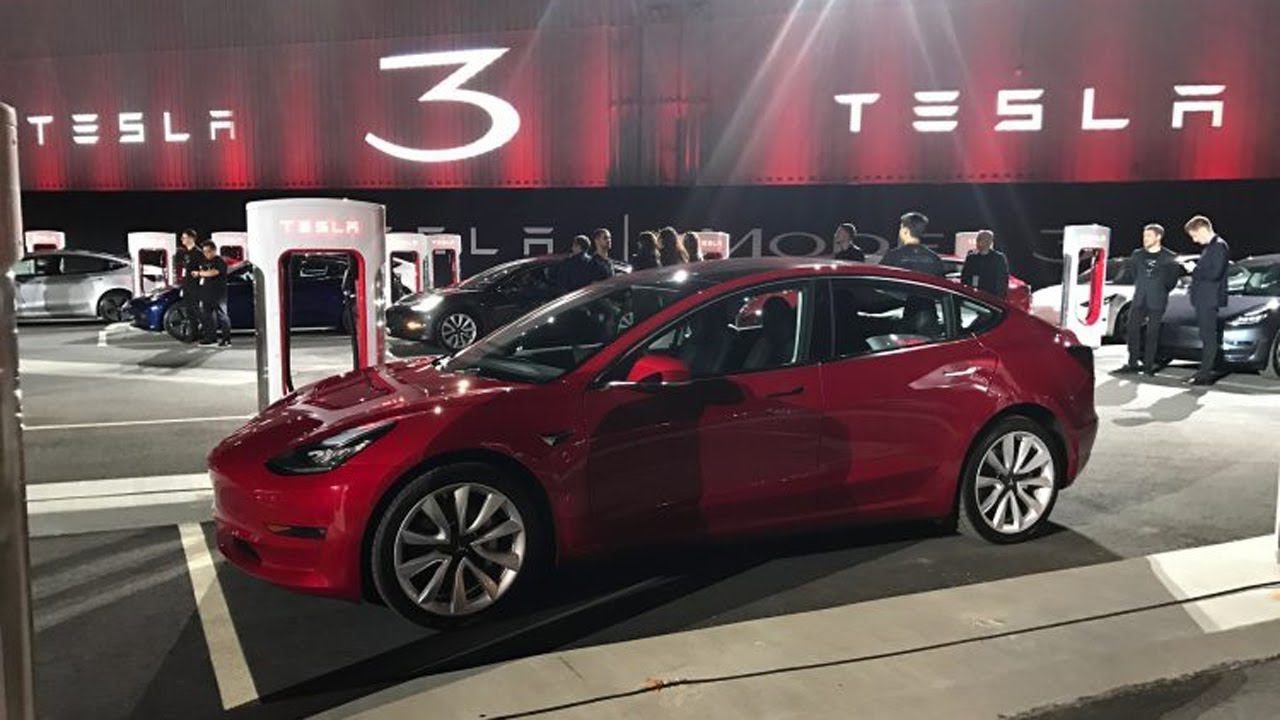Tesla (TSLA) is in a fix, but it’s a problem that any carmaker would kill for. What’s going on behind the scenes at Tesla Motors, what are the dynamics impacting the EV market, and can Tesla overcome the challenges and meet its own lofty delivery goals over the next several quarters?
Tesla’s efforts to move from the premium luxury car segment to the much larger entry-level luxury car segment hinges on the success of of its Model 3. The cheapest car in Tesla’s lineup racked up 373,000 reservations between the time of launch – March 31, 2016 – and May 15, 2016.
The Model 3 assembly line, straight from Elon’s Instagram Account.
With one part of the equation, “the demand” part, proving to be an unprecedented success, it was left to Tesla to make the other part, “the supply”, a success. But all Tesla was able to deliver was 220 cars, a mere 14.6% of their targeted delivery of 1500 Model 3s, for the quarter.
Model 3 production was less than anticipated due to production bottlenecks. Although the vast majority of manufacturing subsystems at both our California car plant and our Nevada Gigafactory are able to operate at high rate, a handful have taken longer to activate than expected. – Tesla Press Release
Tesla has so far refused to update the Model 3’s reservation numbers, thanks to people like us who love to overanalyze numbers. But is not that hard to guesstimate the reservation count using the amount of customer deposits Tesla carries on its balance sheet.
Customers who reserve Model 3 will need put down a $1000 deposit. Tesla’s customer deposits ballooned from $283 million on December 31, 2015 to $679 million on June 30, 2016. The difference of $396 million translated to a little more than the 373,000 Model 3 reservations they had in May 2016.
Since then, customer deposits have been moving lower, and Tesla had $603 million in deposits as on June 30, 2017, or $63 million less than what they had by that time last year. Tesla says Model S and Model X reservations have increased with the release of Model 3. If that’s the case, then Model 3 reservations are certainly not growing at a fast clip.
Tesla Motors, of course, does not want to rake up more reservations. They do not advertise the Model 3, you can’t see the car in flesh and, heck, you can’t even test drive the car. The company is, indeed, in a unique situation, one that involves bending over backwards to make sure that it does not further stretch its reservation count.
But they still have hundreds of thousands of customers to cater to. Tesla Motors produced 25,336 cars during the second quarter, which puts their production capacity at just over 2000 cars per week. They produced 12,807 vehicles during the second quarter of 2015. which means they took two years to double their capacity.
Now, Tesla is targeting a 1000-car production week by this time next year, which is a five-fold jump, and its just not going to be an easy task. Hiccups like the one we saw this quarter are going to happen because, even when Tesla produces 1000 cars per week, it would still need nearly three months to deliver 100,000 cars.
So, Tesla will have to stay on a steady ramp up mode over the next two years, and even that may not be enough. Before you jump the gun and start blasting away at Tesla, if you were a carmaker, think about what kind of trouble you’d be more than happy to have: not having customers or having too many customers? It will always be the latter.
As I said earlier, Tesla has won the demand side of the equation, and their customer deposits are showing that their fans still have their trust in Tesla and are ready to wait for another year or even more to get their Model 3. Now, it’s up to Tesla to live up to that trust. The road does look extremely hard to traverse, but let’s hope Tesla is able to soak up the pressure and keep inching forward.
Volvo, the Chinese-owned Swedish automaker, announced Tuesday that starting in 2019 it will only make fully electric or hybrid cars. – The Atlantic
All new Jaguar Land Rover cars will offer an electric power train from 2020, Britain’s biggest car maker said as it became the latest manufacturer to embrace the electric vehicle revolution. – Telegraph
BMW to offer 12 fully electric car models by 2025 – TechCrunch
With every major automaker announcing its plans to add electric vehicles to their line up or go fully electric, Tesla Motors has a small window of three to five years to capture as much market share as it can. And missing its own targets just doesn’t help that cause, because internal combustion engines (ICEs) are counting their last decade of life, and may be a tiny bit more. When everyone starts making only electric cars, Tesla’s products won’t have the same “I am so different” quotient that they now enjoy.



